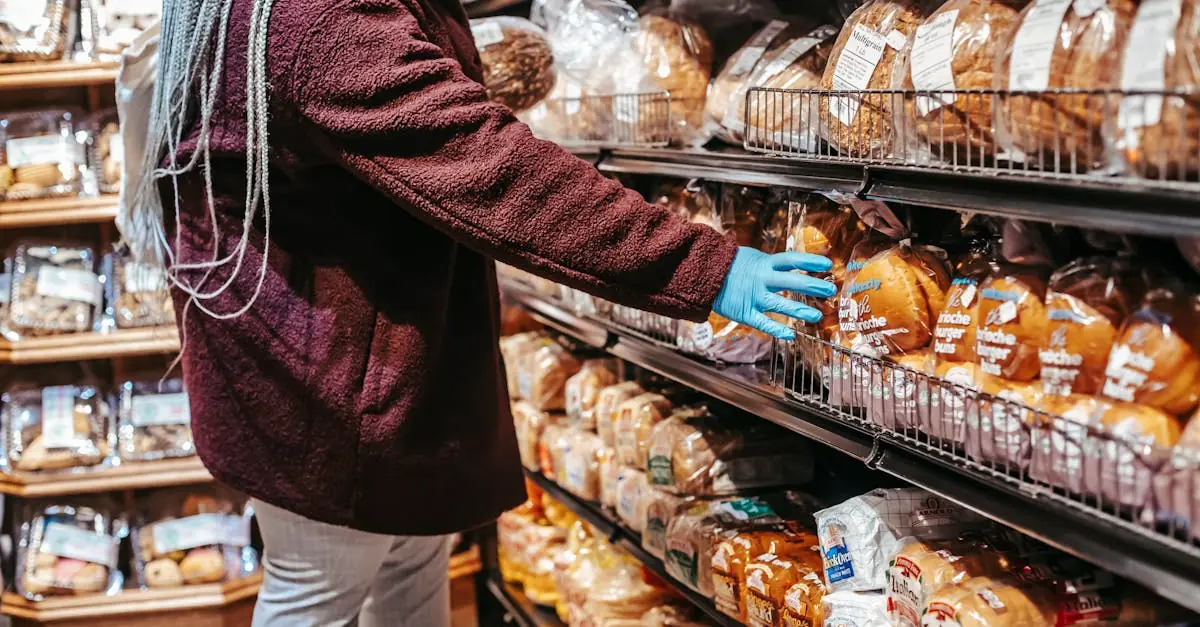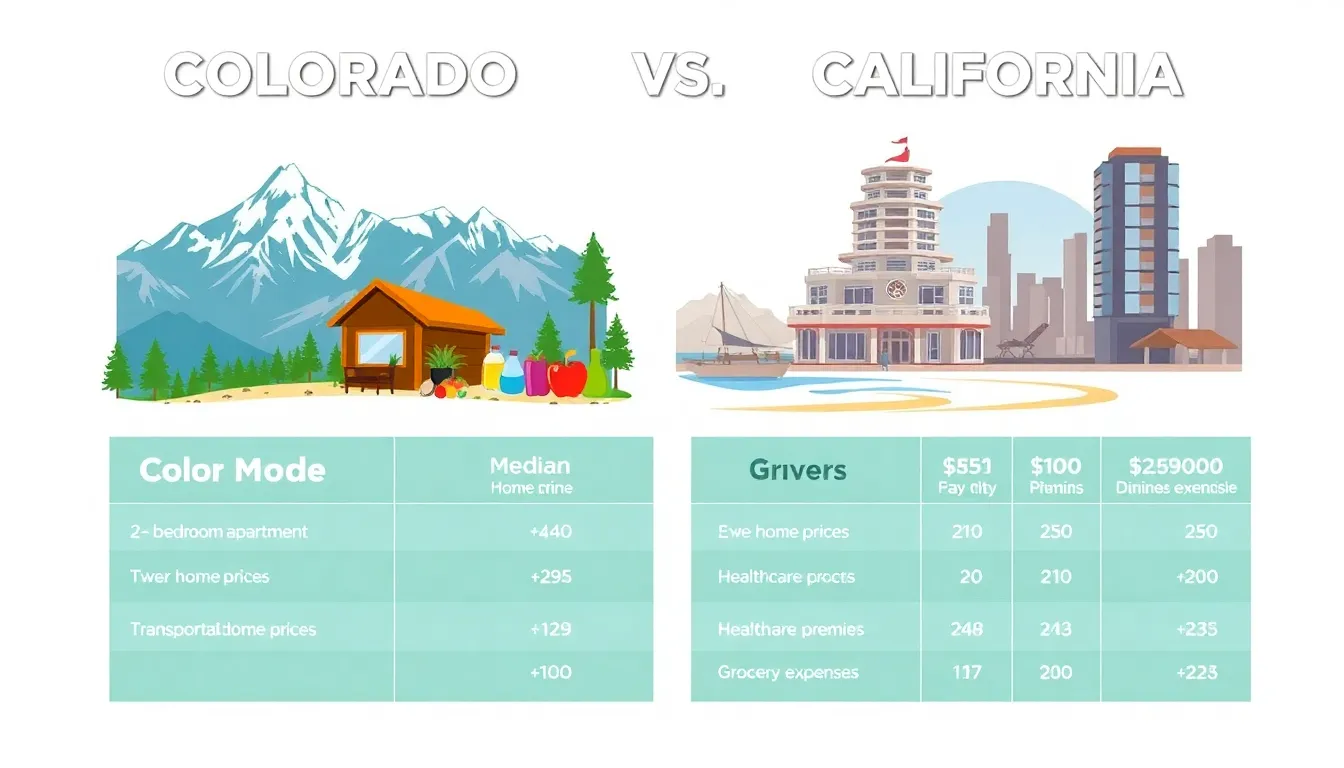Table of Contents
ToggleGrocery shopping used to be a simple affair—grab a cart, toss in some essentials, and head to the checkout. But with grocery inflation skyrocketing, that once straightforward trip now feels like a high-stakes game of financial chess. Prices seem to rise faster than a loaf of sourdough bread in a warm kitchen, leaving many wondering how to stretch their dollars without sacrificing quality.
Understanding Grocery Inflation
Grocery inflation affects consumers, altering spending habits and budget management. Understanding this phenomenon requires breaking down its components.
What Is Grocery Inflation?
Grocery inflation refers to the rise in prices for food and household items over time. It measures the percentage increase in the cost of a basket of groceries, impacting consumers’ purchasing power and budgeting. Significant factors influencing grocery inflation include supply chain disruptions, production costs, and demand fluctuations. The U.S. Bureau of Labor Statistics regularly tracks these changes through the Consumer Price Index, which reflects ongoing price trends.
Historical Context of Grocery Prices
Historical context reveals shifts in grocery prices over decades. For instance, the 1980s experienced intense inflation, with food prices substantially rising. Prices have fluctuated due to economic factors such as recessions and agricultural challenges. The 2008 financial crisis led to increased prices, which affected consumers’ buying choices. In recent years, the COVID-19 pandemic disrupted supply chains, resulting in heightened grocery costs. Recognizing these historical trends helps consumers understand the current grocery inflation landscape.
Factors Influencing Grocery Inflation
Grocery inflation results from several interrelated factors that affect prices of food and household items.
Supply Chain Disruptions
Supply chain disruptions significantly impact grocery prices. Events like natural disasters, trade disputes, or pandemics can halt transportation routes and delay deliveries. For instance, the COVID-19 pandemic led to worldwide shipping bottlenecks, increasing costs for retailers. Furthermore, shortages of essential goods occur when suppliers cannot meet demand. Increased transportation costs further influence prices across the board. As products become harder to obtain, retailers often pass these costs onto consumers.
Changes in Consumer Demand
Changes in consumer demand play a critical role in grocery inflation. Shifts in eating habits, such as the rise of plant-based diets or convenience foods, influence the types of products consumers purchase. When demand surges for specific items, prices often rise in response. Additionally, economic factors, including unemployment rates, can alter spending behavior. If consumers start prioritizing affordable products, retailers may experience fluctuations in inventory and pricing strategies. Such changes drive overall inflation trends in the grocery sector.
Strategies for Consumers
Consumers can adopt various strategies to navigate the challenges posed by grocery inflation. Prioritizing budgeting is vital for effective spending.
Budgeting for Grocery Purchases
Start by creating a detailed grocery budget. Categorizing expenses helps track spending habits. Setting limits on each category encourages mindful shopping. Using grocery lists can reduce impulse purchases. Allocating funds for essential items ensures key needs are met. Tracking prices regularly aids in identifying fluctuations and potential savings. Consumers should consider utilizing apps designed for budget management. These tools assist in monitoring expenses and planning future purchases effectively.
Exploring Alternatives and Substitutes
Exploring alternatives can lead to significant savings. Substituting brand-name products with store brands often results in lower costs without sacrificing quality. Considering seasonal produce can offer more affordable options, as freshness often drives down prices. Choosing bulk items may also reduce the per-unit cost. Investigating local markets can reveal competitive pricing on fresh or specialty items. Utilizing online resources for comparing prices may uncover hidden discounts. Adopting flexible meal planning around available ingredients maximizes savings while minimizing waste.
Business Responses to Grocery Inflation
Businesses adapt to grocery inflation through various strategies to retain customers and maintain competitiveness. Price adjustments and innovative product offerings have become essential in this changing landscape.
Price Adjustments and Promotions
Retailers frequently implement price adjustments, with many increasing prices to offset rising costs. Some use targeted promotions to attract shoppers, creating discounts on essential items. Supply chain pressures compel grocery outlets to balance between profitability and customer satisfaction. Collaborating with suppliers for better pricing can also benefit retailers, allowing them to pass savings to consumers. Flash sales and loyalty programs provide avenues for consumers to save while encouraging repeat business. Seasonal promotions give businesses an edge, enticing price-sensitive shoppers looking for bargains.
Innovations in Product Offerings
Innovative product offerings play a crucial role in business responses to inflation. Many retailers introduce private label brands as cost-effective alternatives to national brands. By focusing on health-conscious and sustainable options, they attract a broader customer base. Incorporating limited-time items can create urgency and draw consumers into stores. Leveraging local partnerships for sourcing fresh produce not only supports the community but also enhances product appeal. Adopting new technologies for inventory management helps maintain optimal stock levels, addressing changing consumer demands. Enhancing the shopping experience with online platforms and delivery services further caters to evolving consumer needs.
Government Interventions
Government interventions aim to mitigate the effects of grocery inflation on consumers. These actions encompass various policies and support programs.
Policies to Address Inflation
Legislators often consider implementing price controls as a response to rising costs. Such controls can stabilize prices temporarily but may lead to shortages if set too low. Subsidies for essential food items can lessen the financial burden on households, allowing them to stretch their budgets further. Tax relief programs also support low-income families by increasing their disposable income. Transparency initiatives, such as requiring retailers to disclose pricing changes, help consumers make informed decisions. These policies collectively aim to address inflation’s impact and maintain access to affordable goods.
Community Support Programs
Local governments frequently establish community support programs to aid residents facing food insecurity. Food banks coordinate with partners to distribute essential groceries to those in need. Meal programs targeted at seniors and low-income families ensure nutritional support for vulnerable populations. Educational initiatives focus on teaching budgeting skills and nutrition. Community gardens provide fresh produce, enhancing food access and encouraging local involvement. These programs foster resilience in the face of inflation while promoting community well-being.
Grocery inflation presents a significant challenge for consumers navigating their budgets. As prices continue to rise due to various factors, it’s essential for shoppers to adapt their strategies. By prioritizing budgeting and exploring alternatives, individuals can maintain their purchasing power while ensuring they get the quality they desire.
Retailers and governments play crucial roles in this evolving landscape, implementing measures to support consumers and stabilize prices. Through collaboration and innovative solutions, the grocery sector can better meet the needs of its customers. Adapting to these changes will empower consumers to make informed choices and foster resilience in the face of ongoing inflationary pressures.







